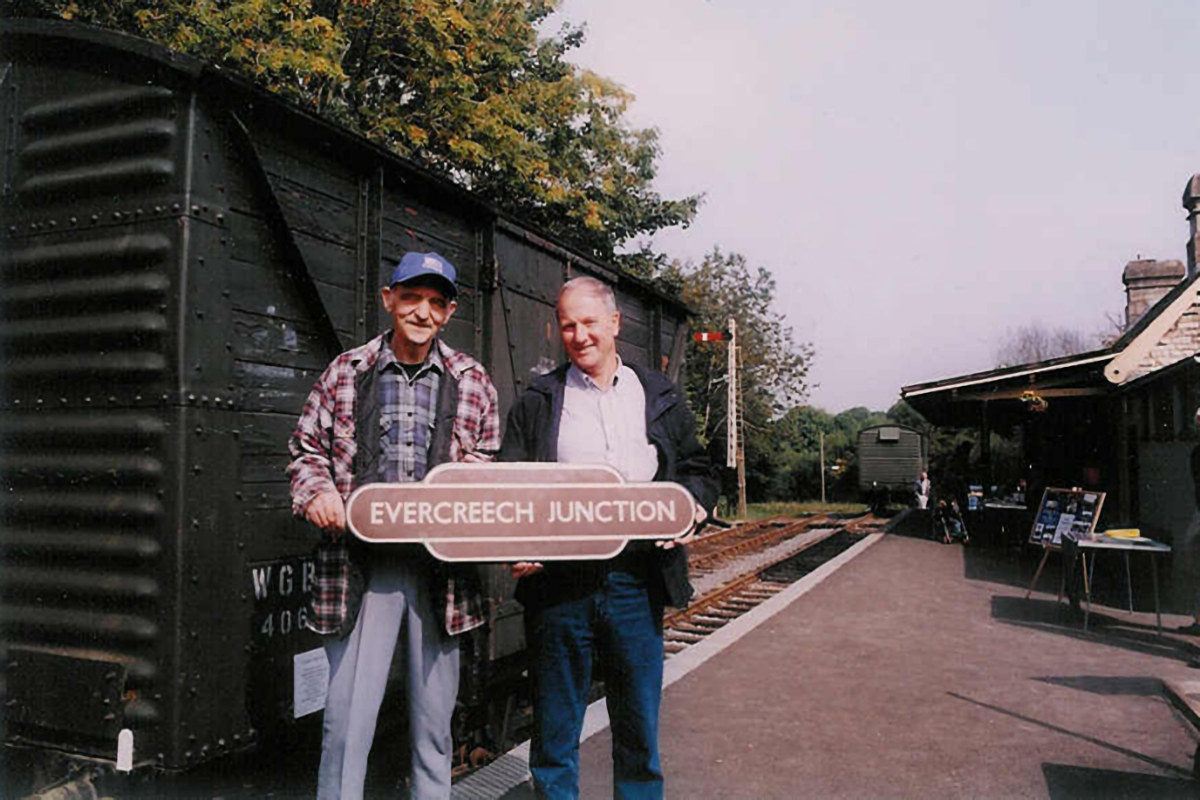14th May 2024 “Midsomer Norton – Rising from the Ashes” by John Baxter

Our 2023/24 season ended on a high with an enthralling presentation from John Baxter, Secretary of the Somerset and Dorset Railway Heritage Trust, on the history of re-establishing a working main line railway at Midsomer Norton following closure of the Somerset and Dorset in March 1966.
John’s first involvement with the S&D was in 1975 and he described the very difficult early days, the personality differences and the legal disputes as the fledgling society established itself and its ways of working. This led to the 1990 creation of the Somerset and Dorset Railway Trackbed Trust (S&DRTT), to protect the existing trackbed and to secure the base for heritage railway operations. In parallel, the Somerset and Dorset Railway Society was created to support the S&DRTT.
Work progressed as funds became available to excavate the in-fill between the platforms at Midsomer Norton (at a cost of £25,000!) and trackwork then began to be re-laid within the station area. The signal box was re-built, luckily using all the original stones that had just been scattered after its demolition. The frame from Branksome box was acquired, along with Tyer’s apparatus, leading to a functioning signal box. With a clear eye for historical accuracy, the famous greenhouse was also restored, next to the box.
The first locomotives then appeared – LMS 1927 Sentinel-built 0-4-0 No. 7109 ‘Joyce’, 1966-built English Electric diesel-hydraulic shunter D1120, and Horwich-built BR Class 08 No. D4075 (08881), enabling the first services to be operated. Further acquisitions followed, including a Class 107 diesel multiple unit from the Avon Valley Railway, a Southern Queen Mary brake van (which is very popular with the travelling public), and a beautifully-restored BR Mark 1 Miniature Buffet car (RMB) and Mark 1 Brake Second Open vehicles W9267 and 9268, both of which were in operation on the last day of the line in 1966.
John described the museum that has been opened in the former stable block at Midsomer Norton, including some of its very rare artefacts such as a saucer from the Somerset Central Railway and a cast Great Western and Midland Railway sign – not to mention the array of numberplates and nameplates from engines of such significance as 34006 ‘Bude’ which (along with 34057 ‘Biggin Hill’) worked the final LCGB railtour on March 5th 1966 from Evercreech Junction to Bath Green Park and then all the way down to Bournemouth Central, with driver Donald Beale in charge.
Towards the end of the talk John focused on future developments, in particular, the push South towards Chilcompton tunnel. John’s expertise in management, administration and legal matters quickly became evident as he described his many interactions with landowners (including the Duchy of Cornwall) to purchase the trackbed South to the Tunnel, to establish a new base for a locomotive shed and (after several short-term leases on the land at Midsomer Norton), to obtain a 99-year lease in 2016 from Bath and North-East Somerset County Council.
The success of the Trust is clearly evident from its activities, such as the 50th anniversary celebration in 2016 which attracted over 5,000 visitors. All that remains now is to find a new home for the gun club that currently occupies the Tunnel and to excavate the 750,000 cubic metres of infill to the northern portal!
The evening concluded at 9.57 with huge applause to John for a captivating presentation on what is without doubt one of the most exciting railway restoration projects in the country.
